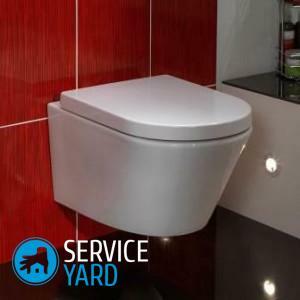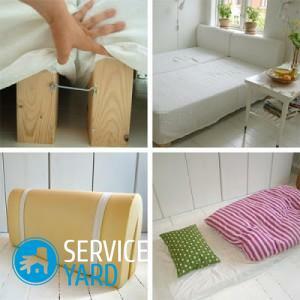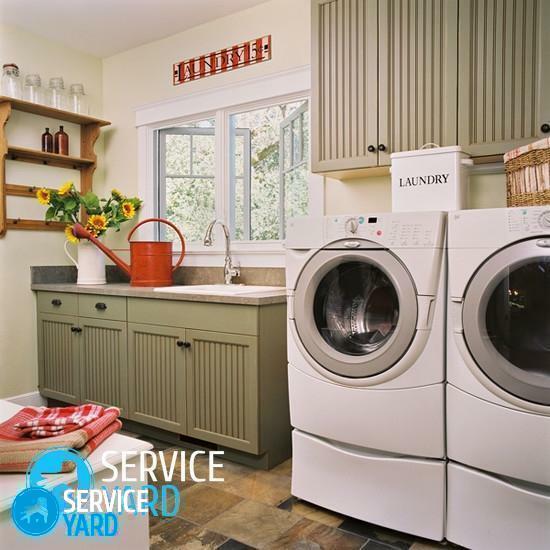
- How to open the drain tank?
- Reasons for the appearance of plaque and its damage
- Types of cleaners
- Popular methods
It's not a secret that the toilet and the drain tank get dirty pretty quickly - both outside and inside. In order for them to retain their shine for as long as possible, it is necessary to take care of them qualitatively and in a timely manner. This applies not only to the aesthetic side, but also to the necessity in terms of basic principles of hygiene and health. Today there are many different means for cleaning toilet bowls: pastas, tablets, gels, liquids - they all help the housewives maintain the ideal cleanliness of the bathrooms. In this article, we will describe in detail how to clean the toilet bowl inside so that it continues to function without fail.
to the contents ↑How to open the drain tank?
Before you clean the drain tank yourself, you must first open it. To do this, close the water and press the drain button to empty the container.
The way of opening depends on the model of your drainage device:
- In some models it is enough to just raise the lid of the tank with your hands and set it aside.
- But sometimes there are models in which the cover is screwed to the drain mechanism. In this case, it is necessary to unscrew the fastening by pressing on the chrome ring, which is located around the drain button.
- In containers made of plastic, the lid can be attached to the sides. In this case, use a screwdriver to unscrew the side brackets.
- The most difficult situation is with the tanks, which are hidden behind the toilet with a false panel or built into the wall. If the revision hole was not made during installation, then you will not be able to look inside.
Reasons for the occurrence of plaque and its damage
Calcareous deposits on the inside of the tank appear due to the large amount of mineral salts that are in the water. Most all contribute to the formation of a deposit of magnesium and calcium salts, as well as iron, which comes from old water pipes.
Especially quickly the plaque appears if the drain tank is porcelain, with a porous, slightly rough surface inside. In this case, impurities are easier to strengthen on the walls, and to remove them subsequently is more difficult.
Important! The harder the water, the faster the tank will cover with a hard coating. In addition to salts, other impurities settle on the bottom. If the lid of the tank is not closed tightly, and dust can penetrate inside, sometimes the blossoming of the walls begins, bacteria, mold grow.
If you do not clean the sides of the tank from the inside in time, the lime scale particles can penetrate the drain channel, which closes the drain hole. As a result - the valve will not loosely fit, and water will leak.
Important! The formation of a plaque in the drainage mechanism of the toilet bowl often causes it to break down. The float lever or some other moving element may stop working, and the locking gasket may also fail. In such cases, it will be necessary to repair or even replace the entire drainage system.
to the table of contents ↑Types of cleaning products
Today, in the markets or in stores, there is a huge range of all kinds of cleaning products, with which you can effectively clean the toilet bowl. It can be means of such trade marks as:
- "Whiteness";
- Domestos;
- BREF;
- "Wedge".
Abrasives
This category of cleaning products includes powders and pastes, which act due to their abrasive properties.
To work with them is very simple:
- First you need to remove water from the toilet, as we described above.
- Then apply the paste on a sponge or a damp cloth, which is carefully wiped off the inner surface until clean.
Important! To abrasive folk methods you can include soda. With some effort, it rubs off even heavy dirt well.
The cleaning process always lasts a long time.
Important! Do not forget that any abrasive damages the surface of the tank, leaving small scratches on it.

Alkali
Almost all modern cleaning products contain alkali - it perfectly copes with the rust and rust on the toilet bowl.
Important! In order to work with such tools, you must protect your hands with gloves, because they can negatively affect the skin of a person.
How to use:
- Drain all the water from the toilet and use a rag or a sponge to distribute the product inside the entire surface of the tank.
- For the remedy to act, leave it for 20 minutes.
- Next, thoroughly wash the surface of the dirt.
- If your actions did not bring the desired result, then repeat the manipulation several times.
Important! With this option of cleaning, the walls of the toilet bowl will not become rough, and the cleaning process is not as long and complex as in the previous case.
Means that contain acid
Here we will talk about solutions of various acids. For example, the preparation "Silit" is based on hydrochloric acid or dry oxalic acid.
In this case, the cleaning process differs little from the previous version with alkali.
Important! Here, too, should use gloves, because chemical agents very dry the skin and cause pain in places of abrasions and cuts.
Acids are considered more effective in combating the contamination of toilet bowls, since they are capable of cleaning even the thickest and hardest deposits of lime.
to the contents ↑Popular methods
If you do not have the opportunity to buy any cleaning agent for the toilet bowl, then you can resort to folk methods, here are some of them:
- The battery electrolyte is a tool for all motorists. It is great for cleaning the toilet bowls.
- Vinegar is an affordable and well-known product will cope with a hard bloom no worse than the most "raw" alkali.
- Citric acid is a remedy for every housewife in the kitchen.
- Toothpaste - suitable in those cases, if the tank is not too running. You should pierce the tube and immerse it in water. These actions will help to clean the tank and fill the bathroom with a pleasant smell.
- "Coca-Cola" - it ideally "eats" pollution in a short period of time.
Remember that it is better to take care of the toilet bowls systematically and in a timely manner than to rush about in search of good tools that will be able to take out a hard, obsolete raid.



